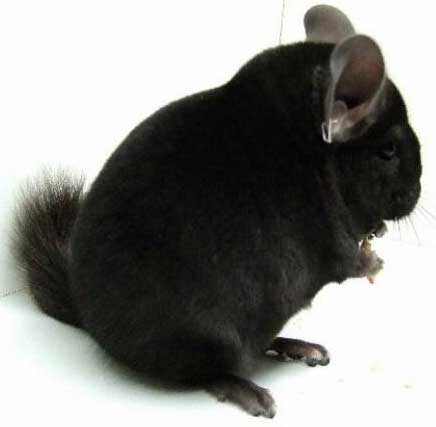Chinchilla – World’s Softest Fur
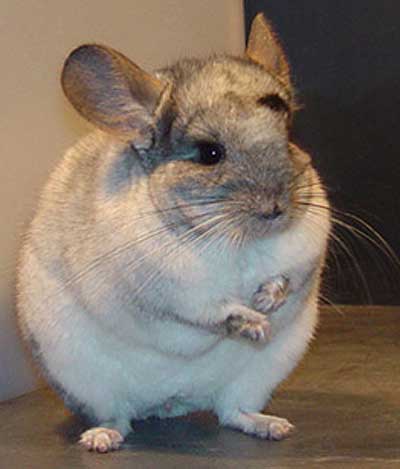
Chinchillas are medium sized rodents native to the Andes Mountains in South America. They are kept as domestic pets as well as living in the wild. Some claim they are the cutest rodents (except when wet or angry). They get their name from the indigenous South American tribe who hunts them for their dense fur, the Chinchas.
Their fur is so dense it is considered the softest fur in the world. Each follicle has around 60 to 70 fine hairs growing from it whereas humans, for example, have only one measly hair per follicle. When they shed, they shed whole chunks or tufts of hair.
Chinchillas are a nocturnal species and keep hidden during daylight hours. They can get up to about 12 inches (30 cm) in height and weigh up to 1.2 – 4 lbs (0.6 – 1.8 kg). The female is generally bigger than the male.
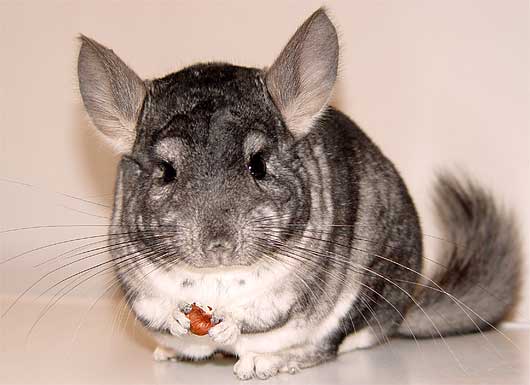
The chinchilla chooses the Andes as its habitat as it is able to find many crevices and burrows in which it can hide from predators. They are also extremely agile jumpers and have been known to jump up to 6 ft (1.8 m). They have many natural predators including skunks, wild dogs, birds and snakes and this coupled with man hunting them means there are very few left in their natural habitat.
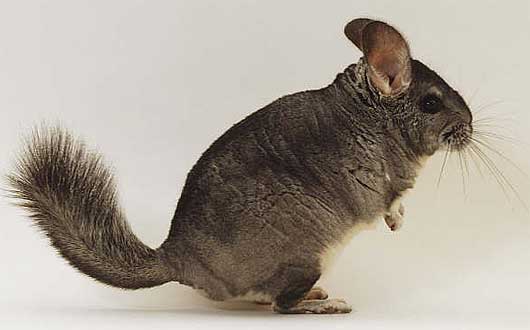
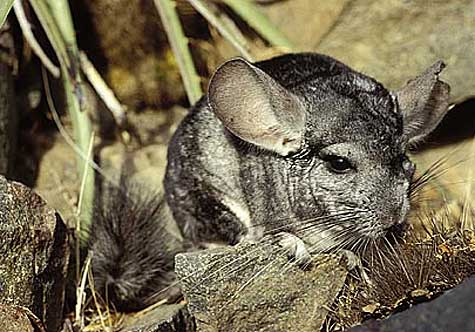
To survive against adversity the chinchilla has many defense tactics. They are known to spray urine in their predators’ faces and also can detach from clumps of hair onto which their predator has latched. They may also spit at aggressors. These techniques have helped the species survive in the wild for as long as it has.
In the wild they are omnivorous and will eat small insects as well as fruit and leaves. They may also form colonies as big as 100 individuals.

In their natural environment – the high desert plain of the Andes
They have very active tails and communicate by different tail movements like squirrels do. Their teeth are naturally yellow or orange.
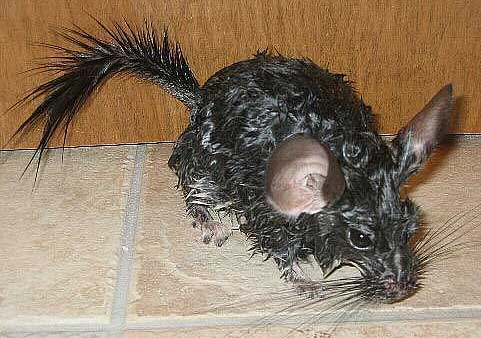
wet chinchilla
Chinchillas became a domesticated pet in the early 20th century when a Chilean engineer took a group of chinchillas to California. Since this time they have been bred as pets and are popular all around the world. If you choose to have a pet chinchilla remember to handle it regularly as they are prone to becoming shy and solitary and once this happens they can nip and bite if you try to touch them. In a domesticated environment you can feed your pet nuts, seeds and pre-packaged specialized food. Another important thing to remember with pet chinchillas is that they are unable to sweat. This means you need to keep them in conditions below 80˚ F (25˚ C) so they don’t have a heat stroke, which is potentially fatal.
